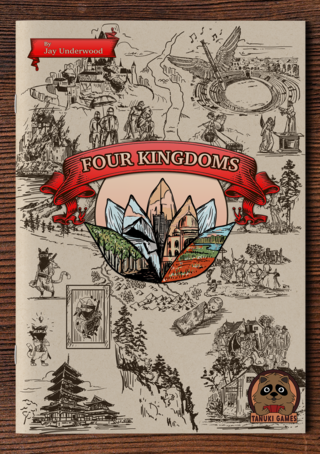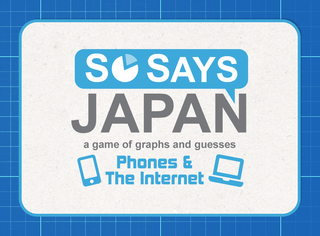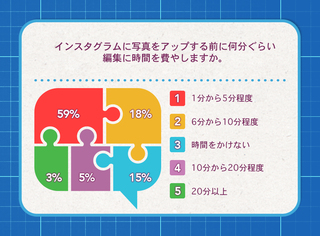


In 2021 we decided to take a tabletop RPG and classroom tool we had been playing among ourselves for years, translate it to Japanese, and go and see if people at the Tokyo Game Market would like it as much as we did. They did! We have been to every Game Market since. Now we are going to Kickstart the English version, so we’ll talk about the game’s evolution here. You’ll also read about our impressions of going to the Tokyo Game Market.
Four Kingdoms is a 1–4-player map drawing and storytelling TRPG. Players collaborate to create the story of four distinct societies and the people who live there over four eras of time. At the end, players will have an artistic artifact full of things as imaginative as enchanted wind instrument people, mechanical rhino farmers or isolationist mushroom artists. The game can either be played as a standalone experience or be used as a creative tool to make a setting for other RPG adventures.
The project began unexpectedly, through a series of happy accidents, driven forward by the joys of creation. The development of Four Kingdoms grew out of chats with our local gaming group in Fukuoka, Japan. It then developed into a game-based learning English language teaching tool meant to inspire creativity and empowerment in students. From there it inspired us to be the start of a game company and for us to see if an audience existed in Japan for this type of game. In a sense, much like the Four Kingdoms game, this project has existed and continues to exist in four distinct worlds.

The World of Role-play
The idea for Four Kingdoms was simple: rather than play in any established world or pre-existing IP, we began riffing ideas to build a new setting in which we would like to play in. Our gaming group arrived at the fun idea of framing our world around the four seasons. We all thought up names for our seasonal countries, including their capital cities, hamlets, trade routes, monsters, magic lore, cultures and languages. These developing ideas would naturally cause conflicts that are inherently good for storytelling and role-play, and thus our future game setting emerged. To give a center to the world we placed a giant old tree. This gave the world a history and mystery we could also explore.

The World of the Classroom
As an English Teacher in Japan, I have always looked for ways to introduce role-playing into the classroom. I wanted to find effective and fun ways to introduce this activity without heavy and lengthy rulebooks. In addition, I wanted to maintain elements of empowerment and community that are inherent in role-playing games. I wanted to create something that could open new players up to the hobby in a short period of time with minimal rules and with maximal participation.
The early Four Kingdoms fit these needs perfectly. The drawing element started taking center stage in the game. This likely grew out of the influence of indie RPGs including The Quiet Year, but also because classroom activities often need some productive artifact as part of a lesson plan. Regardless, this conceit seemed the most natural route to take. Using this method, the students could enjoy doing something that most had enjoyed when they were children – telling stories and drawing pictures about those stories. What could be simpler! The storytelling helped language and creativity naturally emerge. Moreover, upon completion of the game, students could look over what they have created and recall their favorite moments. The result was fantastic. As any attentive teacher can attest, when an activity works well, you can see it in your students’ faces. With Four Kingdoms, students’ eyes would light-up with a glow that continued as they left the class in conversation about what they had just experienced.

The World of Tokyo Game Mart
Fast forward a few years and we had a great game we really enjoyed. It was also a game that we could play online with students and friends during the pandemic. So, with Japan's borders still closed, we decided to try and bring the game to the Tokyo Game Market. We had no idea what to expect, but the Game Market has a very egalitarian barrier to entry. If you have a cool idea please come and show it off! That we did!
The atmosphere of Game Mart is frenetic, exciting and, to be completely honest, even a bit overwhelming! There are so many games that one seemingly cannot see everything in one weekend alone. Hands-on play and direct chats with the designers is the norm. This gets at what is so amazing about the experience – it really is about sharing as much as it is selling. As a lover of the hobby, and artistic creation in general, seeing so many unique new game projects by aspiring and established creatives is an inspiration. Each time that we have been in attendance, we have gotten to know the booths near our area, as well as a few friends that we meet year by year. For such a national event, Tokyo Game Market still manages to maintain a strong feeling of community. There is love for gaming and, from a design and sales perspective, it is an affordable and enjoyable place to be. Most of all it still feels very indie. Some of the big players in the games industry have their impressive booths there—hello Gloomhaven—but 90% of the people there are kitchen table creators. You do get the feeling you can bring small new ideas here and that they will be embraced with enthusiasm. While you will need some competency with Japanese language to fully enjoy this festival of gaming, if you already speak the language of games you will have a great time!
With regard to Four Kingdoms, well, the reaction could not have been better. To watch the previously mentioned spark light up in people's eyes as they “got it” is still something that makes game design so very worth it. Offering a tool for imagination may seem trivial to some, but for me it is a constant source of rejuvenation, energy and hope. It is my hope that players of Four Kingdoms use it in various ways, including the initial conceit that helped to give it life. As a way to generate playable worlds.

The World of Now
The fourth world, the world ahead: Four Kingdoms has now entered a fourth stage – that of being on Kickstarter for a greater audience, that of being the base from which to develop many other great ideas. Well, I suppose we can only hope, roll up our sleeves (the desire to write ‘role’ there was only barely avoided!) and get writing. It is with great thanks to all the role-players, students and customers so far that have made the experience such a memorable one.
If you are interested in more on the Tokyo Game Market, Japanese game blogger Saigo writes an excellent report every year. Have a read. If you are interested in seeing the game played and asking us questions about it, Game Market or anything really will be streaming the game on Twitch at 13:00JST on Feb 11th 2023.
Finally, back us on Kickstarter if you want the game in English!
https://www.kickstarter.com/projects/1195934285/four-kingdoms-a-map-drawing-trpg-zine
Update (September 2023) The Kickstarter funded at over 400% - Thanks everyone who backed us. The game is now avalible to anyone as a PDF from DriveThruRPG
Hello everyone,
We are all still busy working on some new projects for later this year but until then we continue to support So Says Japan with yet another free set of cards from a survey of over 150 Japanese college aged students. After a year of staring at screens maybe I hear some groans over this topic, but we got some really fun answers here. As always some predictable and some quite surprising. Let’s try and easy one with our website new card flip tech! (yes I am one of those guys who spend lockdown annoying trying find out how programming works).
What do you think the number one answer to the question "What do you mostly buy online?" is?
Hover or click to see the answer:


As always are cards are also available in Japanese. The question here is "Before uploading a picture to Instagram, how long do you spend editing?".
Hover or click to see the answer:


Surprised? Not surprised? Either way there are another ten cards containing a further fourteen questions on these PDFs for you to download and use. Click on the pictures to get the English or Japanese PDFs. Also, there are extra worksheets to use in your classes. Make sure to scroll to the bottom to see what next months set will be!
Thanks and get in contact if you have any questions! How to play So Says Japan - Rules and Board.
Coming April - A new way to play So Says Japan!

Hello all and Happy New Year!
We hope you are all well and that you all had a nice New Year's break.
Today we want to offer you a new resource to use made from poor discarded data from our recent Winter free set. First a little background.
When we make a set of So Says Japan we often collect a lot more information and results than we need. This is because sometimes we do not get very interesting answers - it just doesn't generate much interesting debate during a game - or because some questions just do not work for the game. Sometimes, however, we just get way too wide a variety of answers to fit on a poker sized card. The way the game is designed means that a huge array of answers skews the top five results and makes it very hard to guess those top five answers. This is a shame because sometimes that huge variety of answers is interesting.
This resource is made from such data. When we asked hundreds of Japanese people what their New Year's resolutions were for 2021 we got a huge range of answers. This resource contains the first 100 answers. Some are pretty unsurprising but there are some really interesting and unique answers for you and your students to discuss. Download by clicking on the picture below. Thanks and enjoy!
Stay up to date on new free resources and new games by following us on Twitter and Instagram. Our resolution this year is to give you even more content like this. Don't miss it!
Hello everyone,
On twitter this week @kimuti_x posted this list:
【300人以上に聞いた】47都道府県に対する偏県をまとめました pic.twitter.com/MC5WjqJTeu
— キムテス🕶 (@kimuti_X) December 16, 2020
A list of biases people have towards other prefectures. Sometimes funny, sometimes insulting sometimes (I am looking at you Saga) utterly baffling. The information comes from interviews with over 300 people.
I though this fun so here are all the asinine assumptions translated into English (to the best of my ability). I have taken some creative license with some of the translations and some (Saga!) I may still need some help understanding. I think they would make a fun discussion starter in a class or with friends!
Hello everyone,
Well, this has become an annual tradition. Here is our So Says Japan set for Winter 2020. These seasonal sets are fun to put together and give to you because, while most things stay the same, a few things do change from year to year.
Obviously, this year more people said they would spending New Year's with family. That is hardly the biggest surprise.

However, a big change is the rise of Backnumber! Moving up another place from last year in the "favorite Christmas song" category. Will it be the number one Christmas song in Japan in two years time? More importantly, will Mariah Carey be losing her top spot to Last Christmas? Probably because of the Wham getting help from Ariana Grande's cover version of their classic sweater wearing ballad!

Anyway, here are the cards in both English and Japanese, worksheets and a vocabulary list. If you want to see lasts year's cards they are here.
Lastly, we have some big announcements for next year coming. See you in January at the start of, a hopefully, better new year!
Rules are here.
Board to play the game with here.
How to play video is on youTube.



0 Comments :
Write a comment :